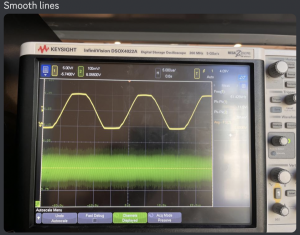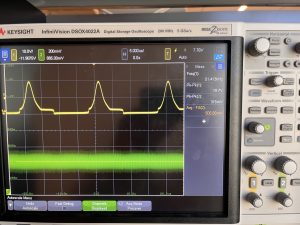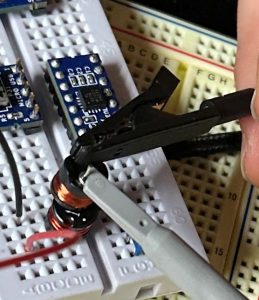This week was a lot of research into what components to buy. We had the proof of concept from last week but realized finding other components would prove to be a bit more difficult than expected. The first thing was the needed addition of a sine wave oscillator, we thought of a few options: using a Colpitts oscillator, a 555 timer with capacitors to make the sine wave, a VCO, or buying a whole wireless charging IC that would have it’s own pair of receiver and transmitter IC chips to then use and adjust. The problem with a Colpitts oscillator would be the math may not be as accurate, same thing with the 555 timer as it may prove to have slightly off frequency wave generation. In addition, we’ll need a power amplifier to increase the voltage and current output of the wave generated. Finding a good VCO on Digikey was oddly difficult, either needed to buy 50 in bulk or it was still a square wave generator or it ended up being a microcontroller itself. In addition, we’ll need to have something that can generate a specific voltage for that. Zhejia and I have spent most of Saturday and Wednesday searching for different ICs that could fulfill our needs. Most appeared to be much more complex than we needed and take up too much space. We found one that appears to be great for our usage in terms of size and simplicity and is also used quite often in other wireless charging products– XKT-510 for the transmitter and T3168 for the receiver as a pair from Taidacent or P9235 and P9222 from Renesas.
We’re a bit behind due to the unknown factors seen in buying the PCB parts, hopefully by Monday we can decide on a product to run with, and from there we’ll start the PCB schematics.
Weekly Question: enumerate how you have adjusted your teamwork assignments to fill in gaps related to either new design challenges or team shortfalls (e.g. a team member missing a deadline)
Zhejia and I have doubled down on the search to ensure we can figure out what parts we really need. Ben has stayed on track pretty consistently so I’ve mainly been focused on my tasks to come to a decision on parts to resolve the issue.
We shall enter the purchase form next week and I look to have a pcb schematic of parts, perhaps even start on layout and looking into what is needed to fulfill requirements.









